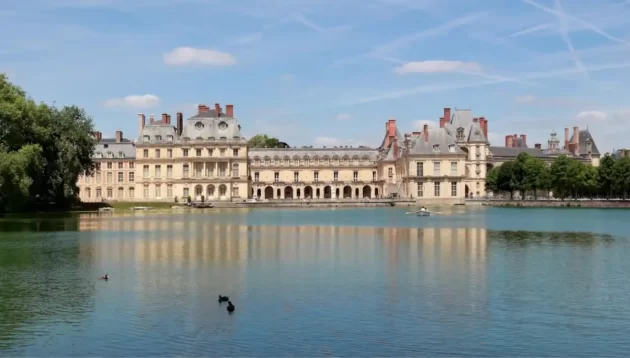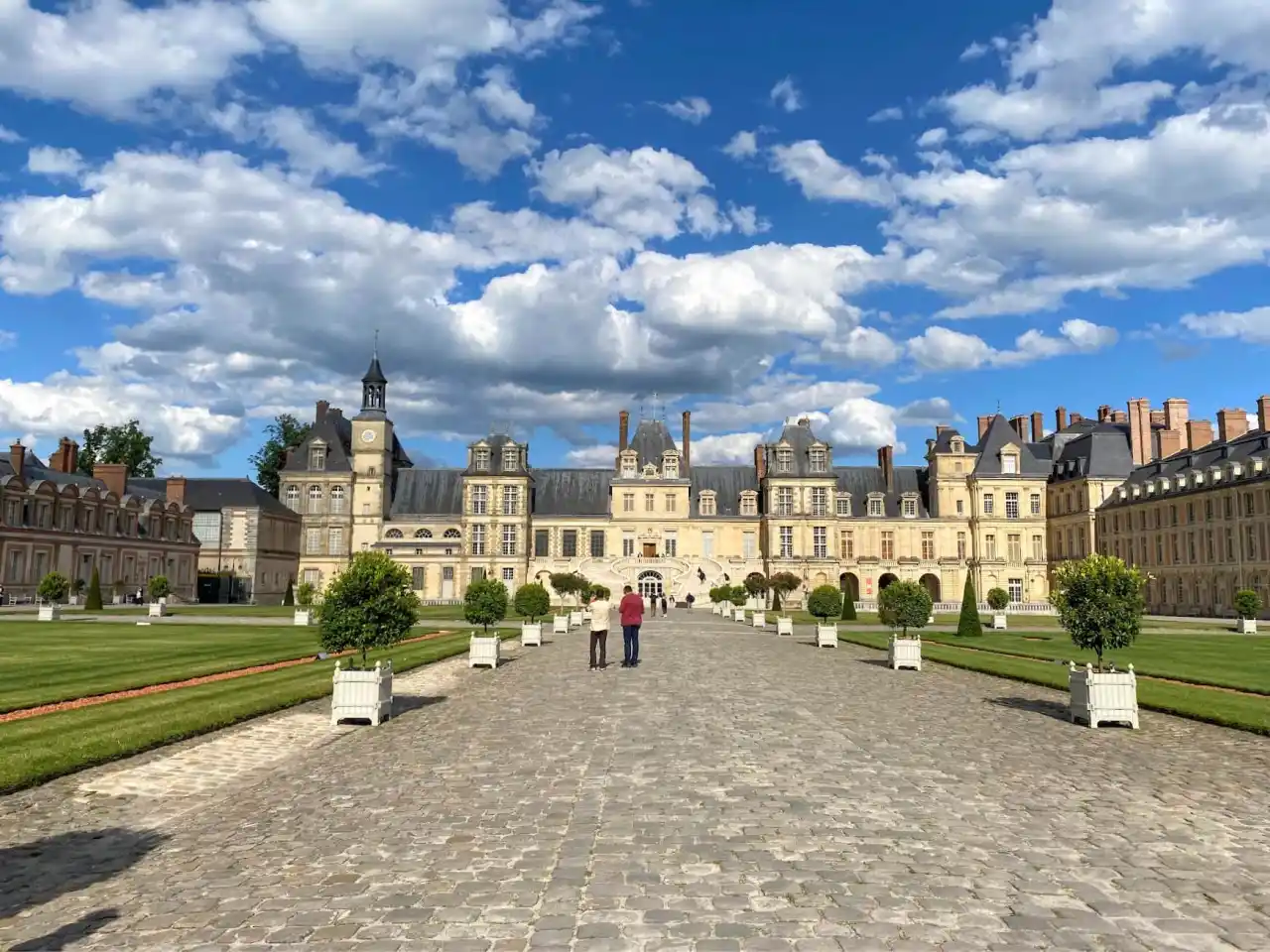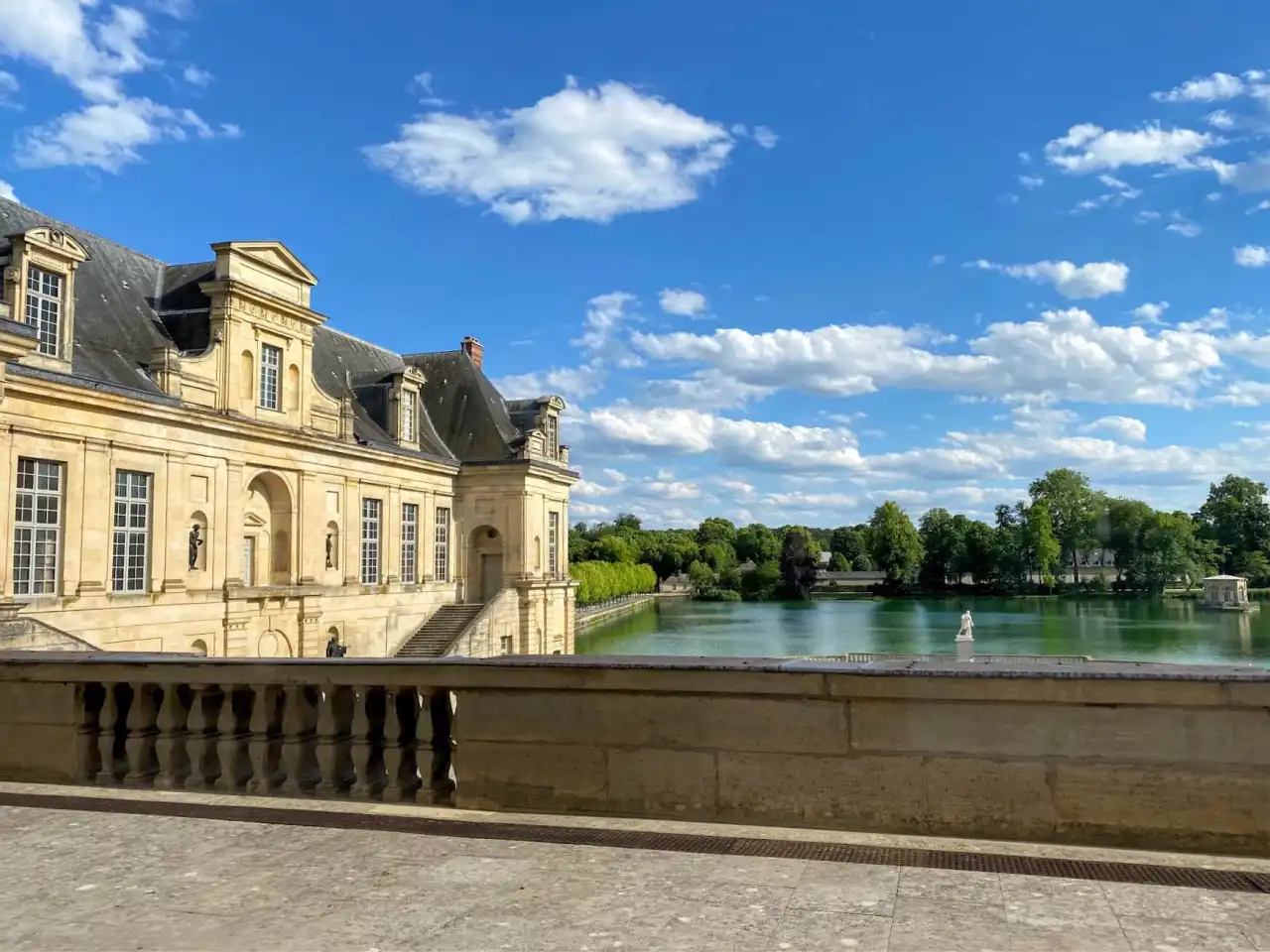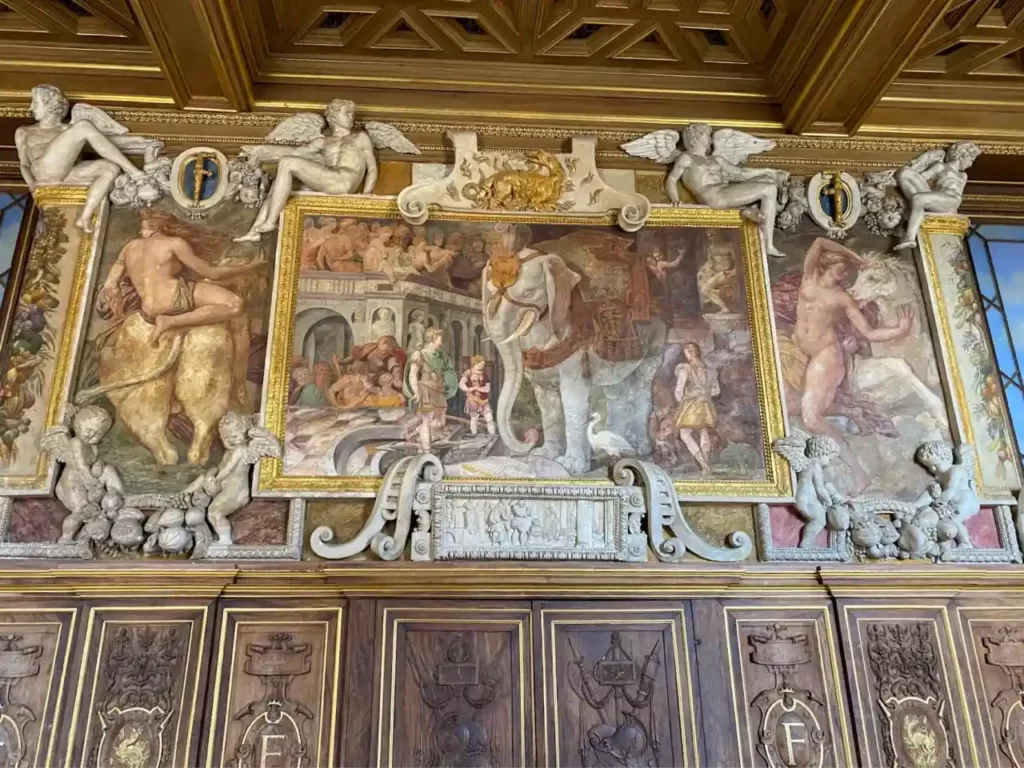France is home to some of Europe’s most beautiful castles and palaces. One of them, the Fontainebleau Palace, is located some 55 kilometres (34 miles) southeast of the French capital, and it makes a wonderful day trip from Paris. Being home to the monarchs of France since the 12th century, it’s a place filled with history. Add to that it’s a birthplace of the Renaissance style in France and you have a great destination to visit for all the cultural tourists.
Fontainebleau Palace
This post contains some affiliate links.
One of the largest palaces in France was home to the French rulers between 12th and the 19th centuries. Almost all of them rebuilt it a bit, leaving their mark and creating an architectural masterpiece. The Fontainebleau Palace has been listed as a UNESCO World Heritage Site since 1981 and opened to the public in 1927 as a national museum.
⤷ Read more: 21 Most beautiful castles in Europe
Fontainebleau Palace History
The Fontainebleau Palace was built as a medieval castle and was first mentioned in 1137. However, it started getting its present shape in the first half of the 1500s. This is when King Francis I began an extensive reconstruction of the castle, making it the first Renaissance palace in France.
He invited Italian artists to rebuild his palace and bring a new style to his homeland. Architect Sebastiano Serlio and painters Rosso Fiorentino and Francesco Primaticcio, started the extensive works on it. The most famous part of the palace they created is the Gallery of Francis I. The type of decoration made within it is known today as the ‘First School of Fontainebleau’.
⤷ Read more: The travelling artists & artworks in Renaissance Europe
King Francis I also created the large square in front of the palace with the additional buildings surrounding it.
His descendants continued working on a palace, expanding and refurbishing it in new fashionable styles. King Henry II and his wife Catherine de Medici built a recognisable horseshoe-shaped staircase that’s used even today for entering the Fontainebleau Palace. The staircase was later on reconstructed by King Louis XIII.
French Monarchs used this place together with their primary residence, Palace Louvre in Paris, and other sites across the country. However, the king who spent the most time in it of all of them was King Louis XIV. During his reign, an important Edict of Fontainebleau about the politics toward Protestants was signed in 1685.
Fontainebleau Palace was home to some of the most famous artworks in the world. Probably the most prominent among them was Leonardo da Vinci’s Mona Lisa, bought by King Francis I from a famous Italian painter.
Luckily, during the French Revolution in 1789, the Fontainebleau Palace wasn’t damaged. Some of its artworks were transferred to the Louvre Museum. While the majority of its furniture was sold out.
Napoleon Bonaparte established a military school inside the palace. He also used it to meet Pope Pius VII before crowning him as an emperor. A few years later, the Pope was imprisoned in the Fontainebleau Palace.
The château was occupied by the Nazis on two occasions during the Second World War in 1940 and 1941. After the war, it was NATO’s headquarters until 1966. The palace was thoroughly restored during the 1960s, as well.
Today, it’s a museum open to the public and one of the best preserved French palaces.
⤷ Read more: The most interesting European myths and legends
Fontainebleau Palace Highlights
The Fontainebleau Palace is home to 1,500 rooms, so it could be challenging to see all of them during your visit. Of course, not all of them are open to the public, so you shouldn’t spend more than two hours visiting it.
To make your visit to that beautiful place easier, here are some of the Fontainebleau Palace highlights you shouldn’t miss.
⤷ Read more: Beginners’ art & culture guide to Paris
Fontainebleau Palace Staircase
Recently restored, the horseshoe-shaped staircase is one of the architectural Fontainebleau Palace highlights. Built by King Henry II and his wife Catherine de Medici, they were reconstructed by King Louis XIII.
It was designed as two flights of stairs with a landing in the middle. Each flight consists of 46 steps. The material used for its construction is sandstone from a nearby Fontainebleau Forest.
⤷ Read more: Ile-de-France travel diary: Paris, Fontainebleau & Moret-sur-Loing
The Napoleon I Museum
Napoleon Bonaparte hadn’t spent much of his time at Fontainebleau Palace because he was too busy with military campaigns all over Europe. But he left his mark in redecorating it for the visit of Pope Pius VII. One of the château’s courtyards is also where he said goodbye to his troops at the end of his reign.
The Napoleon I Museum at Fontainebleau Palace is where you can learn more about him and see some objects and memorabilia linked to the famous ruler.
…the true residence of Kings, the house of the centuries. Perhaps it was not a rigorously architectural palace, but it was certainly a place of residence well thought out and perfectly suitable.
Napoleon Bonaparte about the Fontainebleau Palace
Gallery of Francis I
The famous staircase will lead you to one of the French Renaissance masterpieces – the Gallery of Francis I. Constructed in 1528, it was a direct passage from the Royal apartments to the court chapel of Trinitaires. Painters Roso Fiorentino and Francesco Primaticcio made numerous wall paintings inside it. Today, the Gallery of Francis I is considered one of the first Renaissance artworks in France.
Chinese Museum
Empress Eugenie gained a fine collection of artworks from Asia during her life. Among them, the most interesting were two Royal palanquins, a gift from the King of Siam. Today, those fascinating objects are on display in the Chinese Museum on the ground floor of the Gros Pavillon at the Fontainebleau Palace.
Sadly, in 2015 the Chinese Museum was robbed. Thieves left with around fifteen of the most valuable artefacts in an art heist that was only seven minutes long.
⤷ Read more: The most intriguing art heists in European museums
Tips for visiting the Fontainebleau Palace
⤷ Fontainebleau Palace opening hours: The château is open every day except Tuesday (and a few public holidays throughout the year) 9:30 am – 5 pm (October – March), or 9:30 – 6 pm (April – September). The last entrance is 45 minutes before closing time.
⤷ Fontainebleau Palace online ticket: You can purchase your Fontainebleau Palace online ticket on this link.
⤷ For more info: Fontainebleau Palace has a fantastic website with loads of interesting information about that fascinating building. You can check it out on a link here.
The Fontainebleau Palace is one of the most beautiful châteaus in France and the whole of Europe. A visit to it makes a wonderful trip back in time to the history of France. All while enjoying a beautiful architectural masterpiece.
Have you visited Fontainebleau Palace or some other French castles? Let me know in the comments below!
Cover photo by Stefan K on Unsplash










